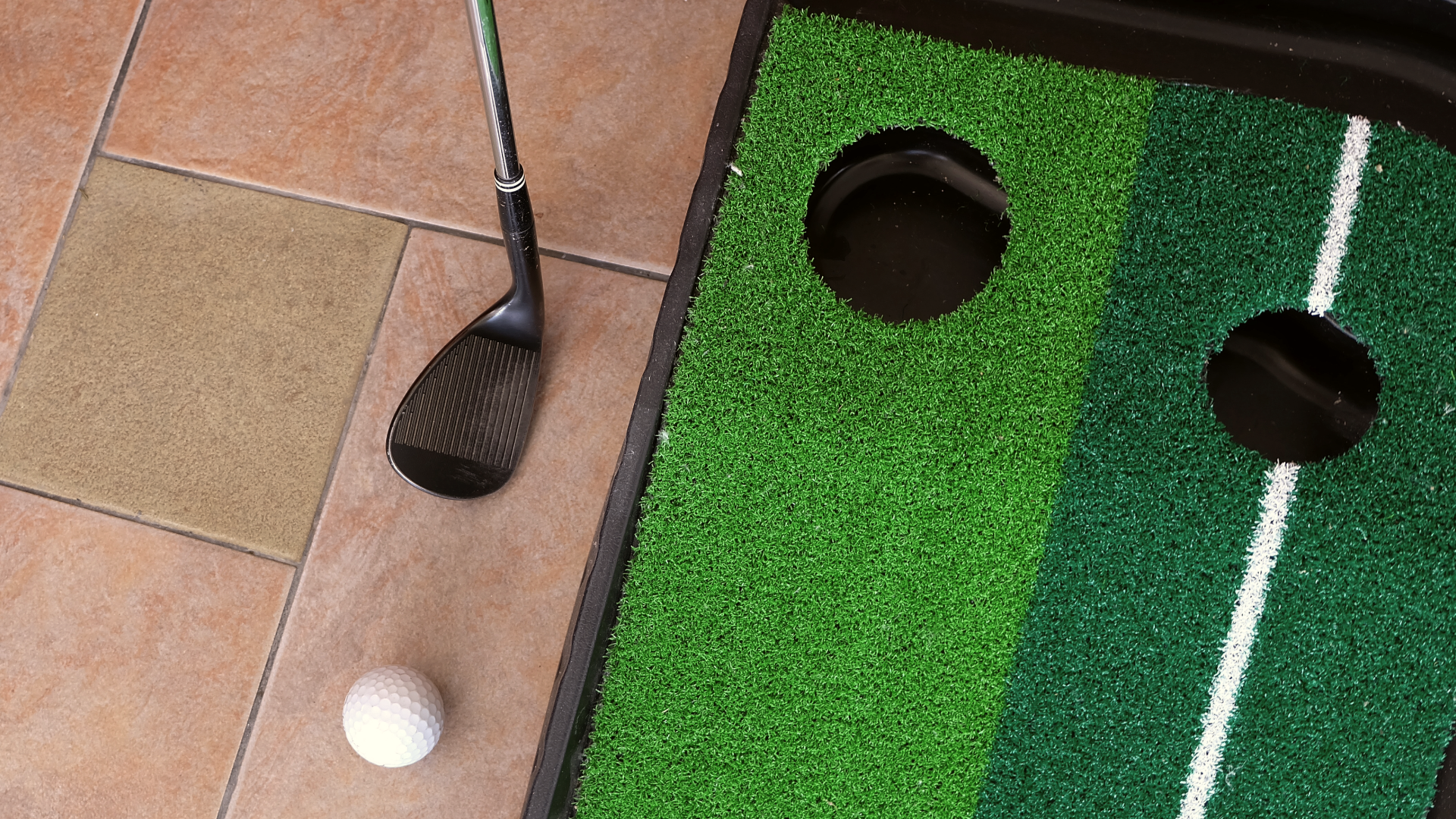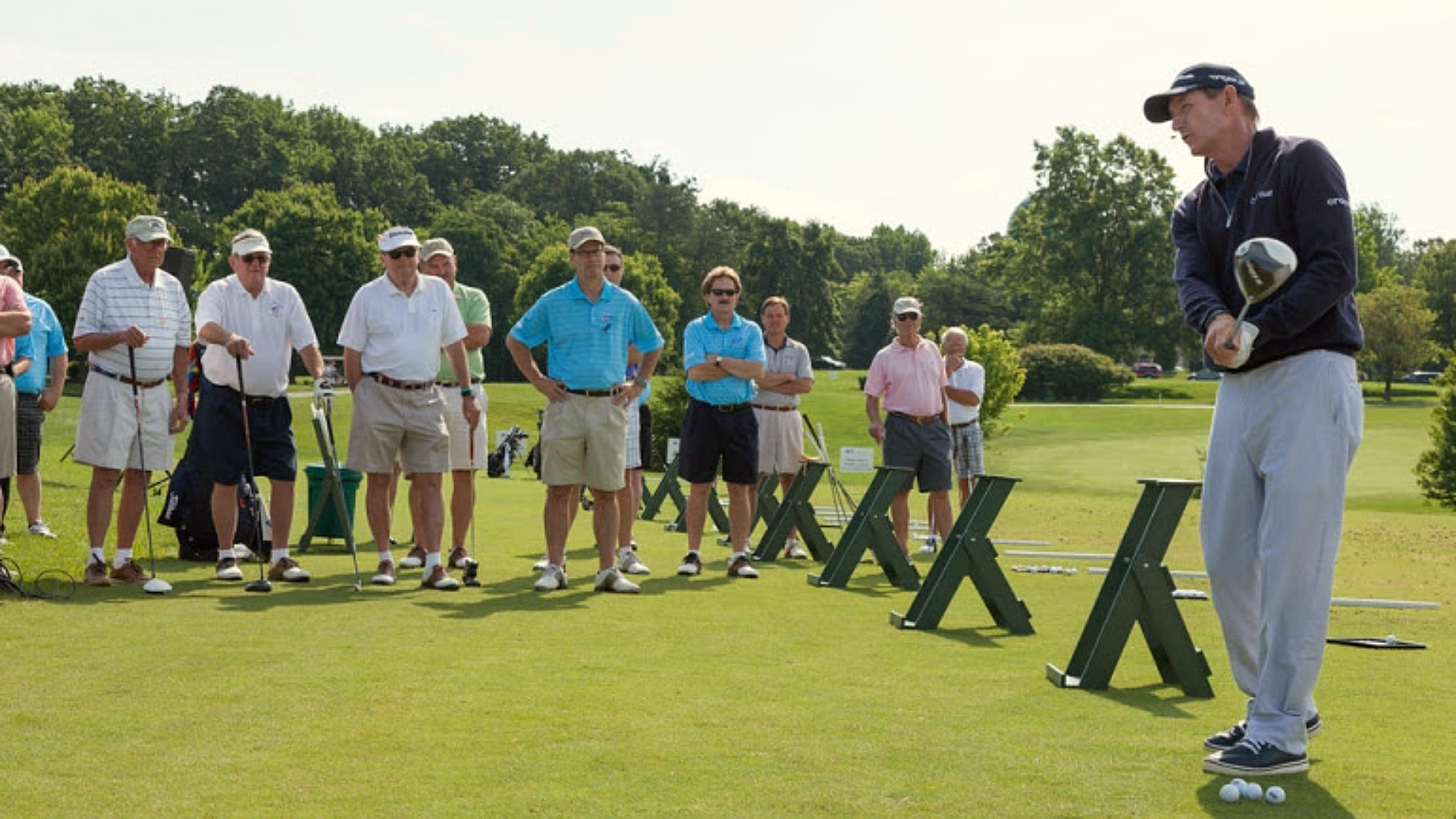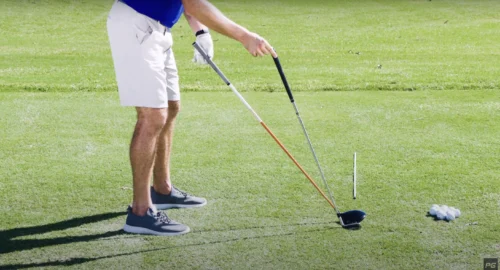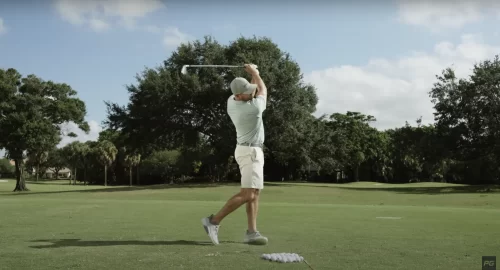
It’s no surprise that regular access to a golf course to work on your golf game is ideal. However, for many golfers, that’s simply not a reality. Whether it’s work, family life, or weather-related course closures, we’re here to give you the best golf practice routine for improving your game at home.
It’s up to you to build out a perfect practice routine for your play style and experience level. However, we suggest you try to incorporate at least some part of these practice elements if you want your work to translate into noticeable on-course improvement.
Best Ways To Work On Your Golf Practice During The Off-Season
Some of the best ways to work on your golf practice during the off-season include setting up a putting practice area, recording your golf swing, and participating in an online training program. Any of these will translate into improvement, but incorporating all of them will truly set you up for success when you’re back on the course regularly!
“The harder you practice, the luckier you get.” – Gary Player
Set Up a Putting Practice Area at Home
Putting is the easiest thing to practice at home. However, you will want to make sure that you set this up correctly, so you’re not doing yourself a disservice and creating bad habits. Your putting practice area should include a mix of putting training aids, video, and an area where you can practice rolling the ball.
Choose a practice putting green that truly feels like a real putting green. The Boburn Golf Practice Green is an excellent choice, as it has room for you to walk around and play putts from a variety of angles which replicates real-life putting.
The true roll surface of the greens will help when you are back in season and you head out to the course again.
We also recommend using the same golf ball that you traditionally play with on the course. Keeping that feeling consistent from in-home practice to on-course practice is quite important.
If you can find a friend to play some putting games against, you may find that your practice is even more effective. Practicing your putting when there is just a little pressure on the line makes it more reflective of a real-life round of golf.
Take 1-on-1 Lessons
In areas where the winter season brings ice, cold, and closed golf courses, the idea of continuing your development and swing training through the winter may seem nearly impossible. However, this is definitely not the case!
With the development of video technology, taking 1-on-1 golf lessons all year is possible.
If you have room to swing your golf club somewhere inside, then you can easily take lessons throughout the winter months.
Golf lessons you take throughout the winter could help you lose strokes and improve, but they can also help maintain your current level without a loss in practice.
You may know that not-so-great feeling of just starting to drop your handicap, and all of a sudden snow starts falling!
With online training programs, you won’t have to lose all of your forward progress. Forget the winter slide and instead keep the improvement going all year long.
Record Your Golf Swing
Recording your golf swing is a very simple option that should be part of your golf practice routine. If you have never recorded your golf swing, you may be surprised by how much it can teach you just by looking at yourself from an outside perspective.
You don’t need a golf teaching professional to see for yourself the things that stand out about your golf swing and where you notice you could use some improvement.
Luckily, you can focus on these things as you practice and use them to improve at home.
Take a close look at your setup, your head and body’s movement, and the plane your golf shaft is on. Using a simple video with your smartphone, laptop or digital camera gives you plenty to work with.
Then, compare the video to those of professionals or an instructional training video. That leads us into our next tip!
Take An Online Class
Online golf training and instructional programs are the perfect way to work on your game in the off-season. Part of a great golf practice routine includes keeping yourself sharp with new, exciting, and fresh content.
There are a few essential things to look for in a golf training program or class.
Make sure you choose a program specific to your needs as a player. For instance, if you struggle with driving distance, choose something like Hank Haney’s training program to get more distance.

If a short game is a concern for you, James Sieckmann’s Finesse Wedge Mastery would be a better choice. Pick a goal for your off-season and then find a training program to match. Most of these can easily be worked on at home, as long as you have clearance to swing a club.
Even if you’re just using your backyard when there’s a nice break in the winter weather, you can improve your swing.
Exercise To Stay in Shape and Focus on Golf Muscles
There’s no question that being a stronger, in-shape golfer can help to improve your handicap. When you have leg strength, balance, and stability through impact, great golf shots are more easily achieved. To work on golf exercise, you should develop something consistent that is enjoyable to do and allows you to be consistent 3-5 times per week.
We also highly recommend incorporating some stretches into your golf exercise routine. Stretching will increase mobility, prevent injuries, and improve overall clubhead speed.
For an in-depth guide on the best golf exercises, check out some of our favorites here.
Research Equipment and Golf Developments
Every year during the off-season, new equipment will come to the market. It’s an excellent time to research and learn about the equipment and develop some understanding of what this new gear has to offer.
Don’t be fooled, it’s not necessary to replace your golf clubs each year. However, if there have been breakthroughs in technology that can influence your game positively, now is the time to consider learning about it.
This may not be part of a practice routine, but it can undoubtedly deepen your understanding of golf equipment, current trends, and can help you make more informed decisions about your golf equipment.
Try Out Golf Training Aids
Incorporate training aids into your golf practice routine if you want to improve your feel and deepen your understanding of the things you are working on in your game. Golf training aids don’t always need to be used while hitting a golf ball on the course.
For instance, something like The StraightAway is a perfect device to use in your home to help get your takeaway perfected in the off-season.
Without the perfect takeaway, the rest of the swing truly doesn’t matter. Attach The StraightAway to your golf club while you are working on your swing in your home. You will get real-time feedback from takeaway all the way to impact.
If ball striking has ever been a concern for you, that’ll be a thing of the past with enough practice.
Training aids that help you develop speed or stability are also good to consider incorporating into your practice routine. You’ll notice training aids deepen your understanding of your swing and golf mechanics.
Watch Golf With A Club In Your Hand
We won’t be the only ones to tell you that watching the professionals play can be good for your golf game. However, we may be the first to tell you to watch golf while you are holding a club in your hand.
When commentators on TV start analyzing a golfer’s swing, you can stand up, grip your club, and see if you can apply their talking points to your own swing. You can learn a lot by watching golf, but you learn even more by making it interactive.
Don’t forget to pay attention to how the professionals approach the putting green as well. Practicing your putting while watching golf is another great way to reinforce your learning and increase proficiency!
The Perfect Off-Season Golf Practice Routine – A Weekly Schedule
To truly see results, you’ll want to develop a golf practice routine to work specifically for your game and your level of time commitment. We’ve put together an example of a practice week to give you an idea of what you can do if you’re willing to put in about 6-10 hours per week in total.
| Activity | Monday | Tuesday | Wednesday | Thursday | Friday | Saturday | Sunday |
|---|---|---|---|---|---|---|---|
| Stretching | ✓ | ✓ | ✓ | ✓ | ✓ | ✓ | ✓ |
| Strength Training |
✓ | ✓ | ✓ | ||||
| Walking | ✓ | ✓ | ✓ | ||||
| Golf Training Program |
✓ | ✓ | |||||
| Putting Practice |
✓ | ✓ | ✓ | ✓ | |||
| Indoor Chipping Practice |
✓ | ✓ | ✓ | ||||
| Video Golf Swing Analysis |
✓ |
Now that you have a complete rundown of all the things you can incorporate to work on your game in the off-season, it’s time to get out there and get it done! The time spent working on your game will only help you get off to a quick start when you get back out on the golf course again. Don’t look at the off-season as a time for your game to get rusty; instead, look at it as a time to improve and take things to the next level.

